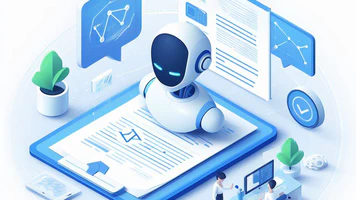- By Justin Riddiough
- December 11, 2023
As we delve deeper into our series on democratizing AI, we address a critical challenge — the gap between AI developers and end-users. This disconnect can often hamper the broader adoption and effectiveness of AI systems.
Understanding the Gap
“AI systems are created by developers for users. But have we stopped to ask - who are these users and are their needs truly considered?”
The landscape of AI development and usage often tells a tale of contrasting worlds. On one hand, we have AI developers — hailing from technical backgrounds, thriving in environments valuing innovation, speed, and sophistication. On the other hand, we have end-users originating from diverse walks of life, each with unique needs, skill sets, and contexts.
This disparity presents a complication. AI development often happens in a bubble — with developers striving for cutting-edge, efficient algorithms, the focus on usability and practicality for everyday users may blur. After all, an AI system, no matter how technologically advanced, is of no use if it is too complex or not aligned with user needs.
Bridging the Gap
“Minimizing the gap isn’t an overnight process. It requires inclusive design, thoughtful communication, and a constant eye on potential dependencies.”
Addressing this disconnect doesn’t mean oversimplifying AI or expecting all users to become coding experts. Instead, it demands a focus on inclusive design and effective communication.
Inclusive design: This approach involves developing AI systems that cater to a spectrum of users — from tech-savvy individuals to those without a technical background. Central to this philosophy are user feedback, diverse data representation, and thorough testing. Ethics and privacy measures are integral to the design, not just an afterthought.
Effective communication: Providing clear, easily comprehensible language in AI interfaces and documentation is pivotal. This can help users understand what the AI system does, the rationale behind its actions, and how to use it effectively.
But there’s an additional element to consider — utility dependence. As AI becomes integrated into day-to-day life, users may come to rely on it as a utility. It’s crucial to be aware of commercial or other forces that may, intentionally or unintentionally, act against users’ best interests through blind spots or different motivations.
This gap doesn’t only limit the use of AI systems; it also throttles the potential AI holds to transform businesses, industries, societies, and the world at large. Progress lies in bridging this gap — in developing AI systems that forefront end-user needs.

